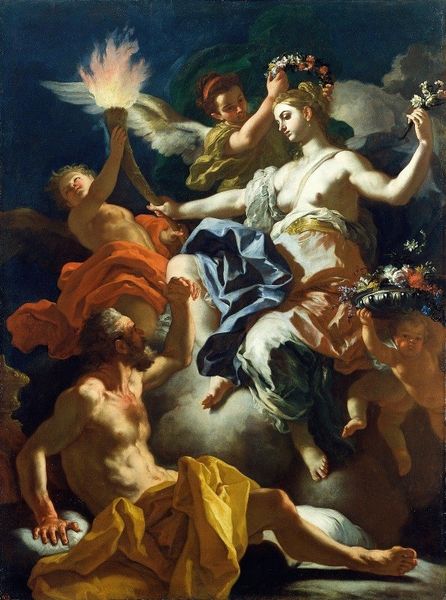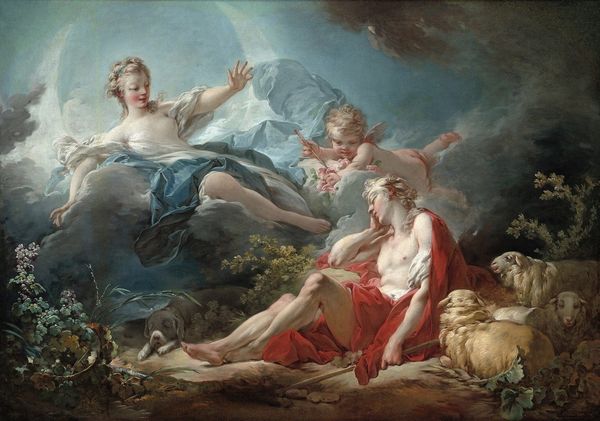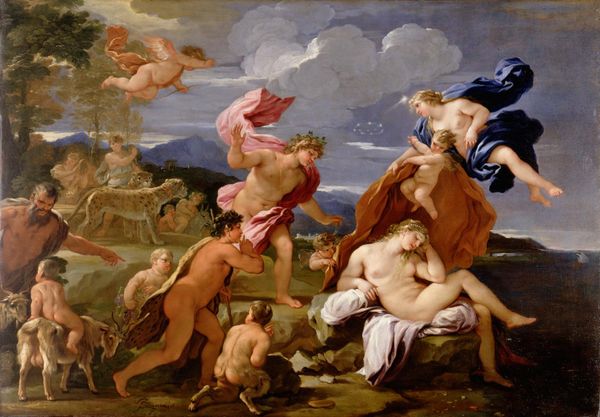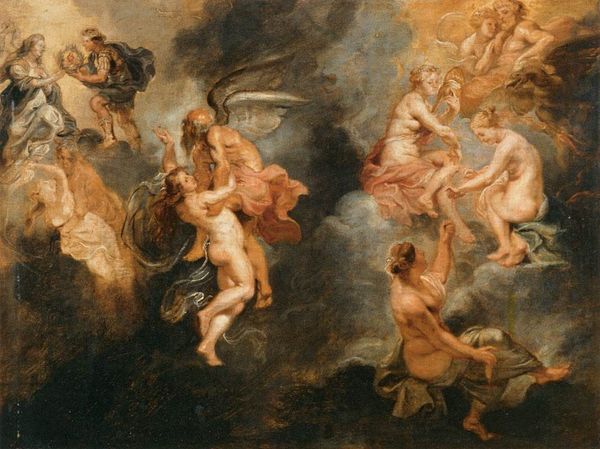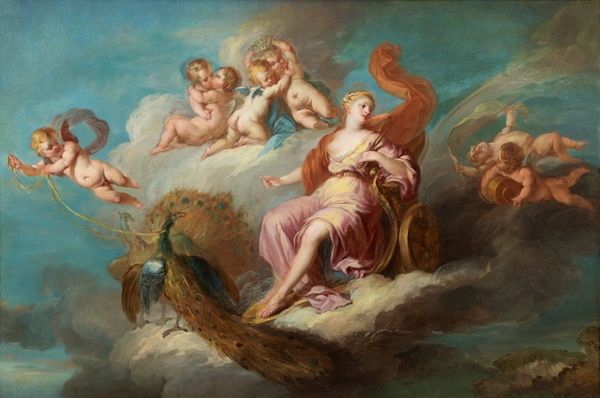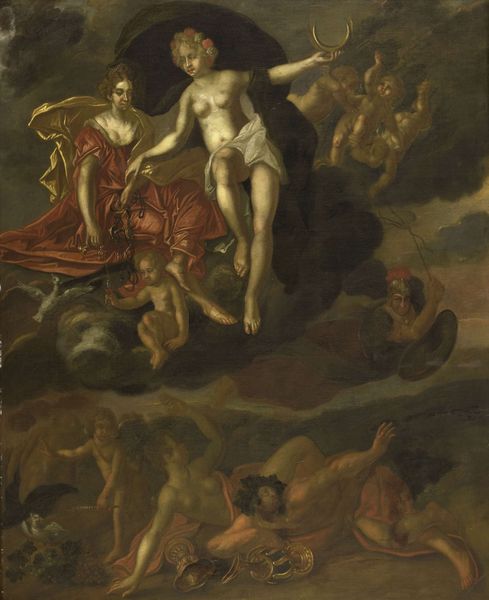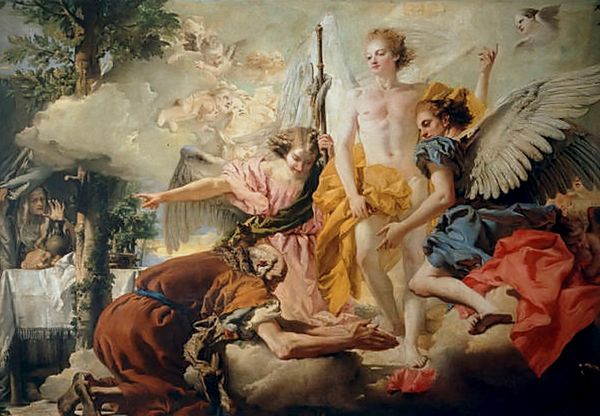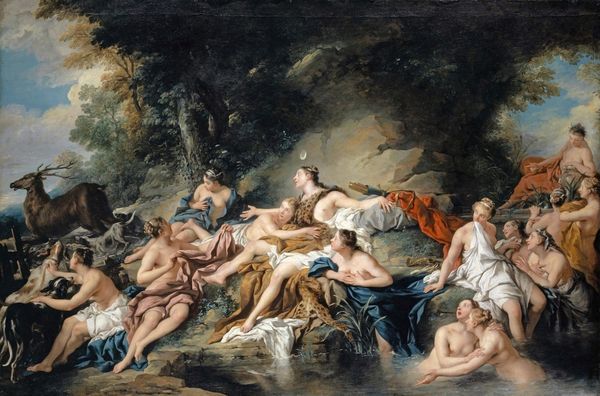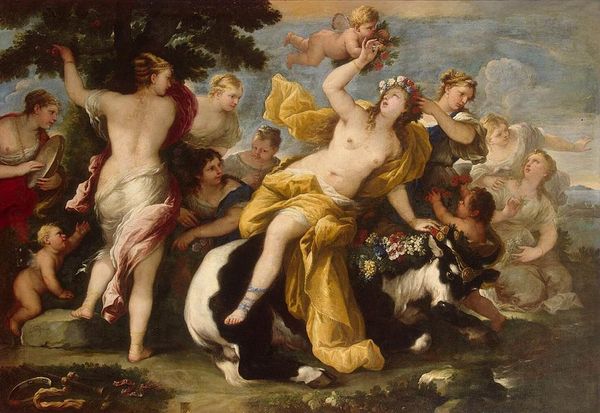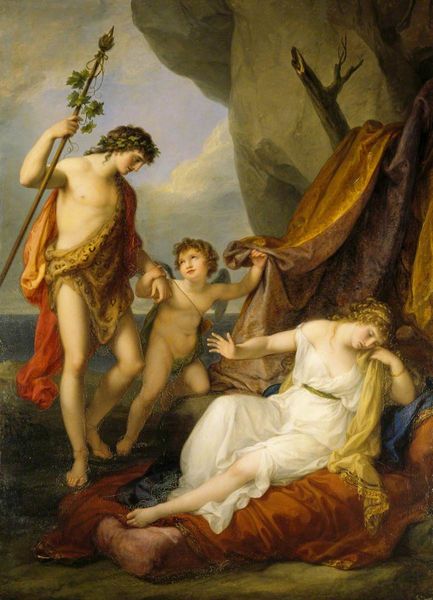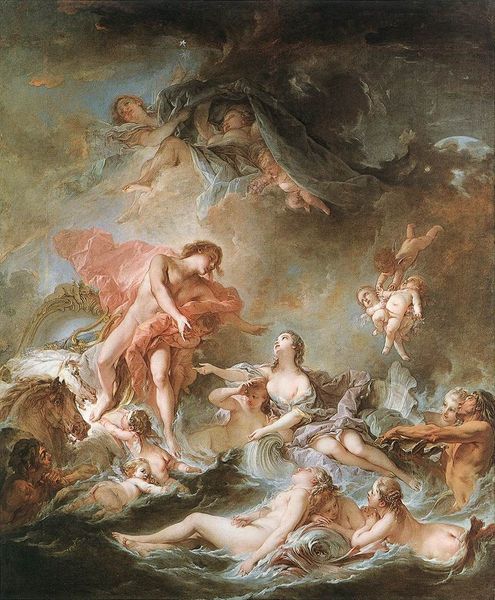
painting, oil-paint
#
allegory
#
painting
#
oil-paint
#
oil painting
#
mythology
#
nude
#
portrait art
#
rococo
Copyright: Public domain
François Lemoyne created this painting titled 'La Toilette de Venus' in France, during the 18th century. The scene depicts Venus, the Roman goddess of love and beauty, surrounded by nymphs and putti. The image generates meaning through visual codes associated with classical mythology, accessible to the educated elite of that time. This was the era of the French court, and art often served to celebrate beauty, pleasure, and mythological themes, reflecting the values and tastes of the aristocracy. The painting's emphasis on idealized beauty and sensuality is typical of the Rococo period, which was closely tied to the social structures and cultural norms of the time. Royal patronage played a significant role in the arts, shaping artistic production and determining what themes and styles were considered acceptable. To better understand this work, one can explore the history of the French court and the artistic movements it patronized. Studying the biographies of the artists and the social context in which they operated will deepen our understanding of the meaning of art as something contingent on social and institutional context.
Comments
No comments
Be the first to comment and join the conversation on the ultimate creative platform.

